Lighting
Facilities should be designed to offer as much natural light as possible. When artificial light is used, it should closely approximate natural light in both duration and intensity (CFA 2009; Griffin 2006; New Zealand 1993; Patronek 2001). Enclosures should be positioned so individual animals can avoid exposure to excessive light or darkness. Cages should be spaced far enough apart to allow ambient light to reflect off the ceiling and floor. Adequate amounts of darkness are as important as light. Light and darkness should support the natural (circadian) rhythms of wakefulness and sleep. Adequate lighting is also necessary for the practical observation of animals (AAEP 2004).
Acoustics
An appropriate acoustic environment is essential for good animal health and welfare. Noise should be minimized in animal areas. Dog and cat hearing is more sensitive than human hearing so it can be assumed that noise levels that are uncomfortable to humans are even more uncomfortable for animals. Many common features of animal shelters contribute to elevated noise levels, including: forced air ventilation, barking dogs, non-porous building materials, use of power hoses, metal kennel gates, and metal food bowls. Excessive noise contributes to adverse behavioral and physiological responses (Spreng 2000). Excessive noise from barking dogs is a particular welfare concern because of both its magnitude and duration (Sales 1997). Sound levels in a shelter can exceed 100 dB, largely due to barking (Coppola 2006). Sound is measured on a logarithmic scale, so a 90 db sound is 10 times louder than an 80 db sound. Any sound in the 90–120 db range can be felt and heard and may lead to irreversible hearing loss in humans. For comparison, a jackhammer produces noise in the 110 db range, and a subway train 95 db. Levels of 50–70 db or higher are likely detrimental to the hearing of rodents and rabbits (CCAC 1993). (See section on Public Health for information on occupational safety.) Because sound can have a detrimental effect, interventions to reduce sound in kennels are important for animal health and well-being. Architectural strategies to minimize noise's impact (e.g., caging arrangement, materials selection for cages, doors, and latches) should be implemented in facility design or be added to an existing facility. Appropriate architectural strategies combined with behavior modification or enrichment strategies to reduce barking can dramatically reduce noise levels (Griffin 2009a; Johnson 2004). Staff must also be instructed to avoid creating excessive noise during routine activities (e.g., slamming cage or kennel doors, tossing metal bowls). Noise-producing equipment should be located as far away from the animals as possible (Hubrecht 2002). Sound absorbent materials must be durable enough to permit repeated cleaning and should either be out of the animal’s reach or resistant to destruction (Hubrecht 2002). Shelters should be designed so that cats are not exposed to the noise of barking dogs (McCobb 2005).
In a study of shelter dogs, visual contact with other dogs improved welfare and did not increase barking (Wells 1998); therefore preventing visual contact should not be used as a general strategy to reduce barking. Music has been used to reduce animal stress in a variety of different settings (Line 1990; Wells 2002). While anecdotal reports support this finding, little data exist to recommend its use for shelters. Music or other sounds as a form of enrichment need to be considered carefully, particularly if animals have no way to move away or control their exposure. Many animals, including dogs, are able to hear frequencies above what humans can hear. Therefore, if music is introduced, radios or other sound systems should not be placed directly on cages and the volume should not exceed conversational levels. In one study, heavy metal music was shown to increase barking and arousal, whereas classical music had a calming effect (Wells 2002).
Visual Considerations
Do not let dogs face each other be unable to escape the gaze of other dogs if possible.
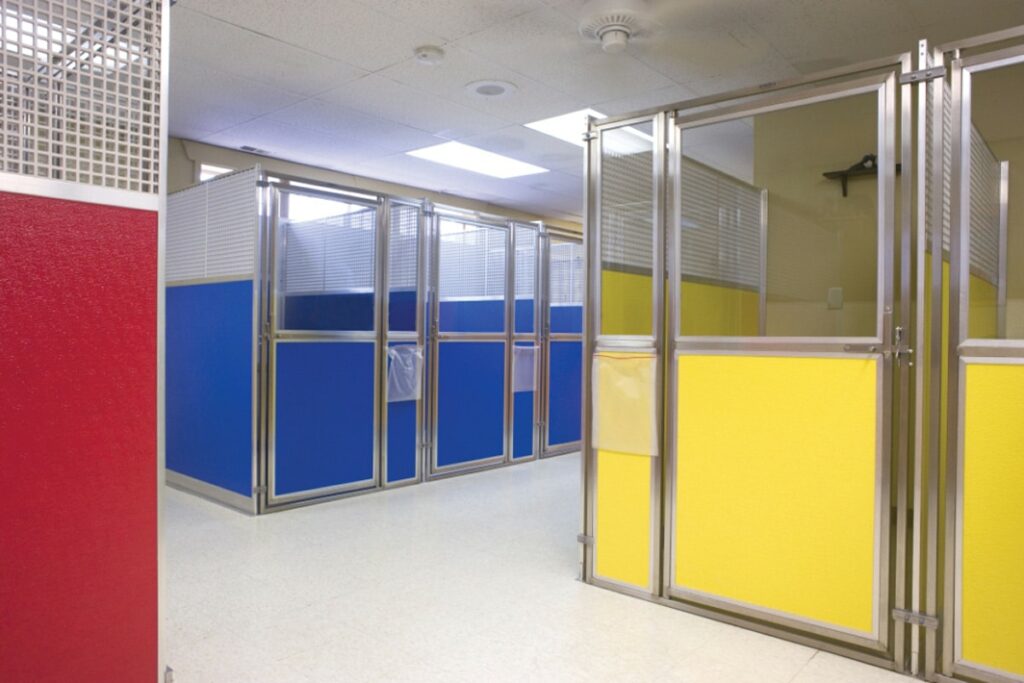
Drainage
To avoid the necessity of mopping, any area requiring routine disinfection, such as animal housing areas, get-acquainted rooms, and indoor play areas, should be designed with drains. At minimum this is a requirement for all dog housing areas. Although passionate arguments are made either way, there is no documented association between drain type (individual vs. trench) and level of disease. It is possible to control disease in shelters with either drain type adequately, provided drains are well designed, appropriately placed, adequately cleaned, and properly functioning. Conversely, drains of either type that are difficult to clean or accessible to animals can transmit disease. Never place drains in walkway areas.
Flooring
Non-porous surfaces that can be easily disinfected and are durable enough to withstand repeated cleaning should be used in all animal areas and must be used in those areas housing puppies or animals who are infectious or who are newly admitted with an unknown health history. These principles are equally important in home-based programs. A sealed, impermeable surface, such as sealed concrete or epoxy is ideal for flooring (New Zealand 1993). Carpeting should not be used in animal housing areas because it cannot be effectively cleaned and disinfected. In a home-based setting or light-use situation, linoleum or tiled floors may be acceptable, but seams and grout lines require higher maintenance and attention to sanitation than a sealed surface. Points where walls meet floors should also be sealed. Peeling, scratched or chipped floors that cannot be properly sanitized should be repaired or replaced. Special accommodation (e.g., soft bedding or slip-proof mats) is required for animals with arthritis, muscle weakness, or other mobility impairments, as these animals may have difficulty rising if surfaces are too slippery. Floors should be gently sloped to enable wastes and water to run off into drains. Waste water should not run off into common areas or adjacent kennels. Adequate drainage must be provided (New Zealand1993). When drains are located in common areas special care must be taken to sanitize and disinfect those areas prior to allowing animal access. Drain covers should be designed to prevent toes from being caught in drains.
Outdoor Areas
The following categories of dogs or should not be kept in outdoor facilities without very careful consideration:
(i) Dogs that are not acclimated to the temperatures prevalent in the area or region where they are maintained;
(ii) Breeds of dogs that cannot tolerate the prevalent temperatures of the area without stress or discomfort (such as short-haired breeds in cold climates); and
(iii) Sick, infirm, aged, or young dogs.
(2) When their acclimation status is unknown, dogs must not be kept in outdoor facilities when the ambient temperature is less than 50 °F (10 °C).
Shelter from the elements.
Outdoor facilities for dogs must include one or more shelter structures that are accessible to each animal in each outdoor facility, and that are large enough to allow each animal in the shelter structure to sit, stand, and lie in a normal manner, and to turn about freely. In addition to the shelter structures, one or more separate outside areas of shade must be provided, large enough to contain all the animals at one time and protect them from the direct rays of the sun. Shelters in outdoor facilities for dogs or cats must contain a roof, four sides, and a floor, and must:
(1) Provide the dogs with adequate protection and shelter from the cold and heat;
(2) Provide the dogs and with protection from the direct rays of the sun and the direct effect of wind, rain, or snow;
(3) Be provided with a wind break and rain break at the entrance; and
(4) Contain clean, dry, bedding material if the ambient temperature is below 50 °F (10 °C). Extreme consideration and additional clean, dry bedding is required when the temperature is 35 °F (1.7 °C) or lower.
(c) Construction. Building surfaces in contact with animals in outdoor housing facilities must be impervious to moisture. Metal barrels, cars, refrigerators or freezers, and the like must not be used as shelter structures. The floors of outdoor housing facilities may be of compacted earth, absorbent bedding, sand, gravel, or grass, and must be replaced if there are any prevalent odors, diseases, insects, pests, or vermin. All surfaces must be maintained regularly. Surfaces of outdoor housing facilities--including houses, dens, etc.--that cannot be readily cleaned and sanitized must be replaced when worn or soiled.
Identifiers
A unique identifier (e.g., name and /or number) and record must be established for each animal upon intake. Identification should be physically affixed to the animals' kennels.
medications, caution, etc...
Basic elements of a record should include: the identifier, results of microchip scan, microchip number if present, source of animal, dates of entry and departure, outcome, species, age, gender, physical description (breed and colors), and available medical and behavioral information.
Kennel Run Design Solutions
Raised
T-Kennel
Rotating Bowls
Build Up
Tubs and Grooming Area
Sinks and Food Prep
Lockers and Safety
collars, dangerous items, medications, etc..


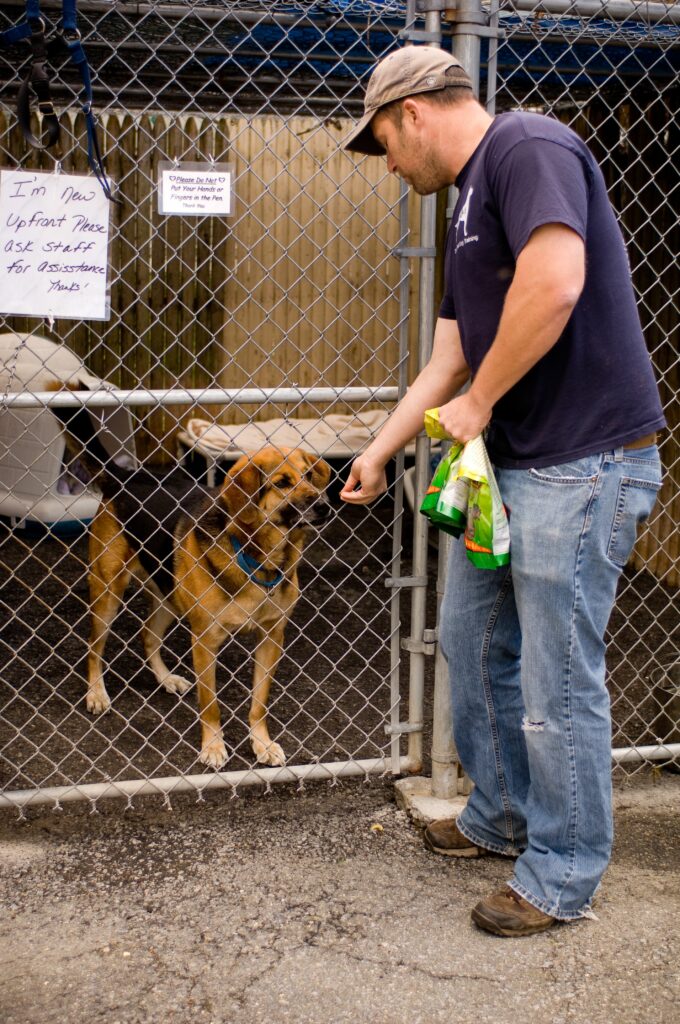

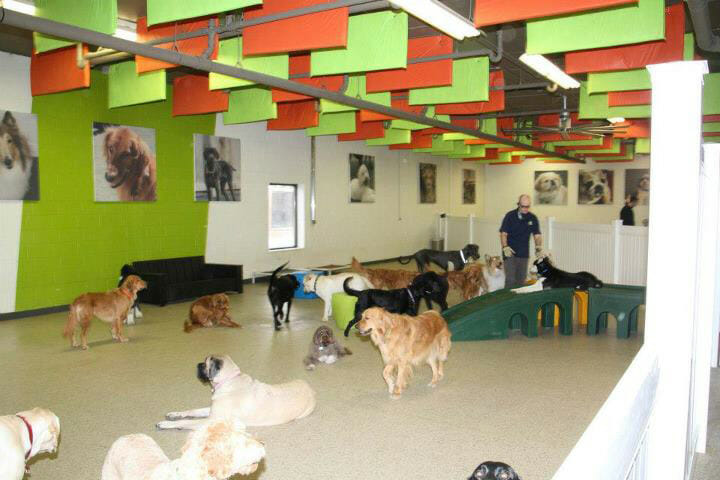

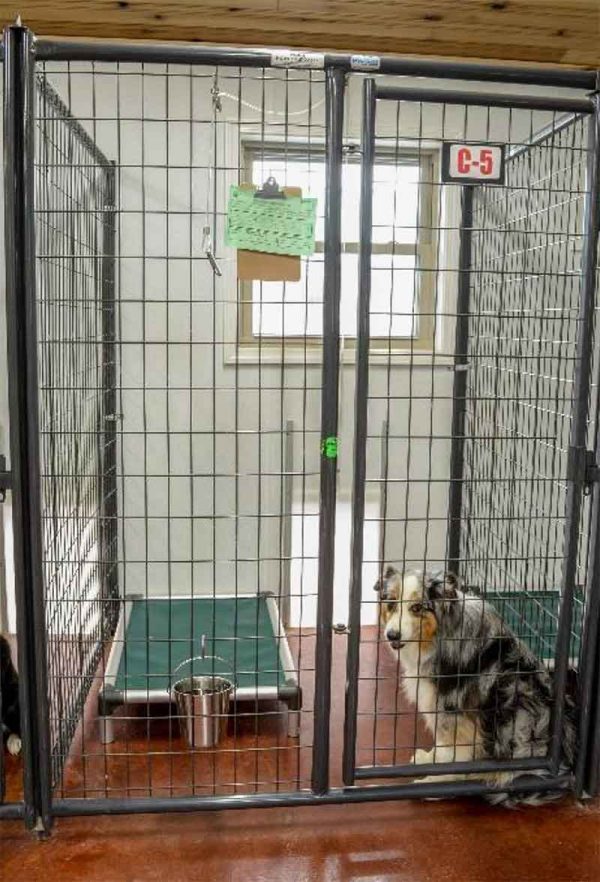
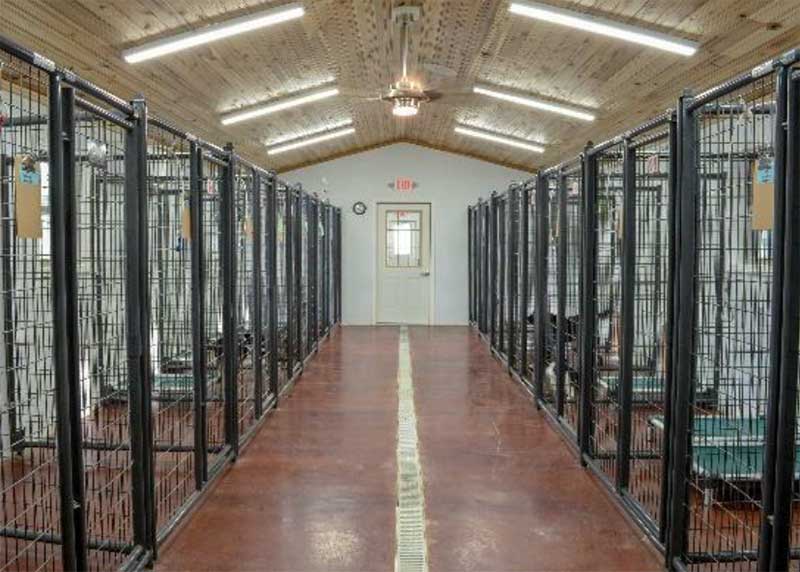
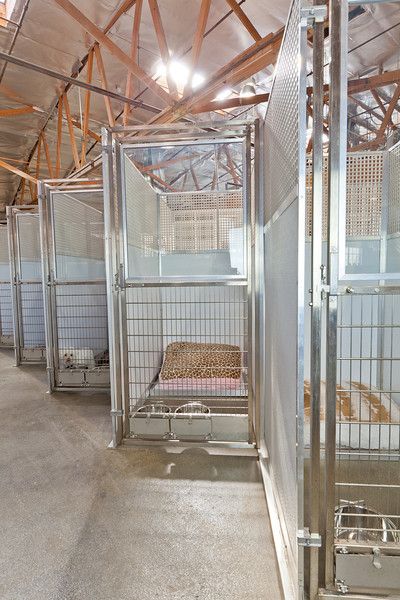
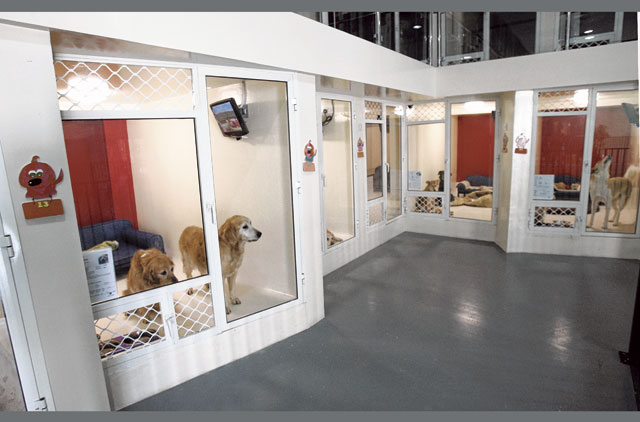
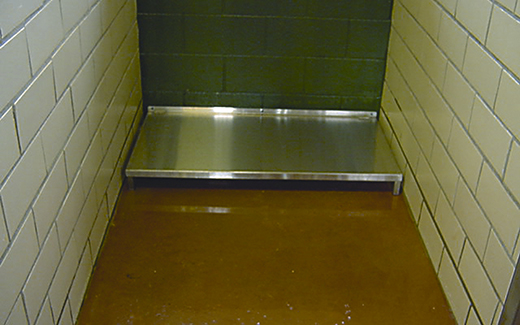

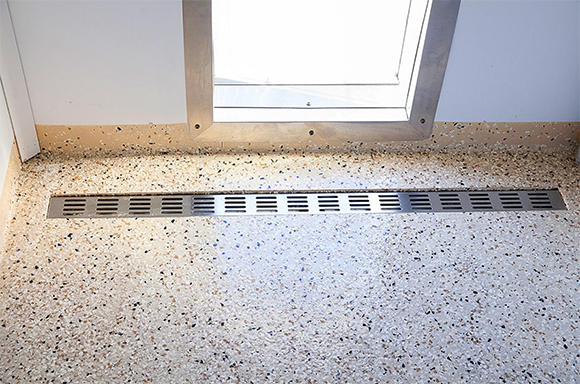

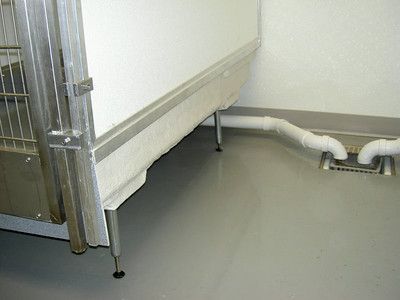
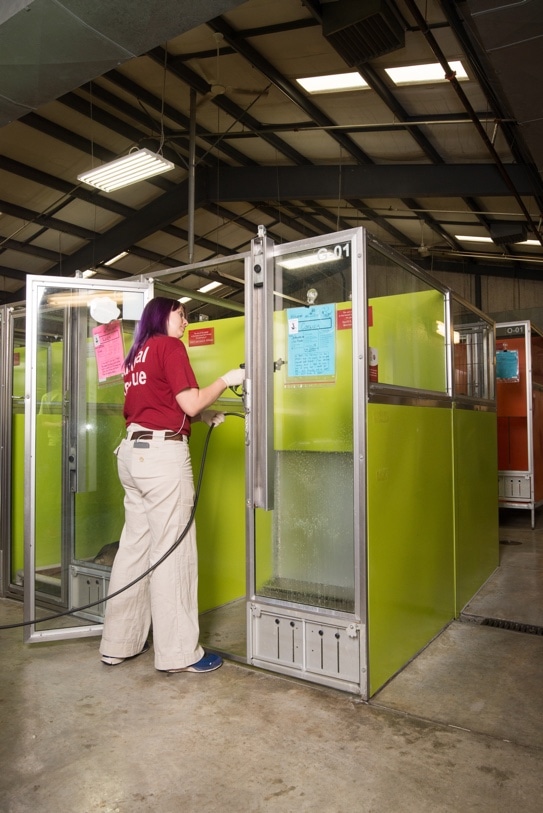


Responses